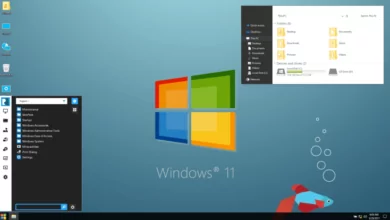A Step-by-step Guide to Effective Risk Management Software

Risk management software offers the framework to reduce the risk of undesirable results from corporate relationships or contracts. By streamlining corporate governance into a single system and automating processes, you can be proactive in risk mitigation, enabling growth efforts. Due to the digitization of risk management, organizations can maintain scalable compliance with both internal and external regulatory bodies through third-party networks.
Steps Include in Risk Management System
Let’s take a close look at the procedures that must be adhered to in order to do risk analysis in order to lessen harm and comprehend how to use risk management in software engineering. Any project manager can successfully deliver a product with the aid of this technique.
1. Identification of Risk:
Identifying risks by using a risk management system requires brainstorming. It also involves compiling a list of risks. An approach used for group discussions is brainstorming, and it involves the entire project management team. This method inspires creative thinking and the generation of fresh ideas. Making a risk list requires recognizing dangers that have regularly occurred in earlier software initiatives.
2. Prioritization And Risk Assessment:
It is a project management process that entails the following steps:
- Recognizing the project-risk-causing problems
- Estimating the possibility that a problem may arise
- Assessing the problem’s effects
- Assigning probabilities and impact scores between 1 and 10
- The risk exposure factor’s determination
The project manager needs to compile all of the information into a table and rank the risks based on the risk exposure factor.
3. Risk Mitigation And Avoidance:
This method seeks to completely prevent dangers from occurring. By removing unnecessary requirements, the project scope can be decreased to reduce risks. In order to avoid dangers, one must first identify them and take steps to minimize them, if possible, or at the very least lessen their effects.
Risk avoidance examples include:
- Avoiding using specific software features due to the possibility of bugs or other issues occurring;
- Intensify software testing operations utilizing test cases to make sure a product is bug-free before it is released;
- Ensuring that any software modifications are adequately tested before being released.
4. Transfer of Risk:
In software engineering, this method is applied to lower project risk. When a project’s scope is too big for one team to handle and there is no way to divide the work up so that each team may be in charge of its own portion of it, risk transfer is typically used. In this situation, you need to locate a third-party organization that can handle a piece of your project.
For instance, project management might choose to employ someone else who has the required designers or programmers if your team is working on video editing software but doesn’t have enough of those skills. In this approach, you can focus on what’s most crucial—making ensuring everything comes together in a fun way—instead of worrying about managing every aspect of the app yourself.
5. Acceptance of Risk:
Risk acceptance is a software engineering strategy that entails taking on risks in order to finish the system. If there is a lot of ambiguity regarding which features will be needed and when they will be needed, it might be a smart idea. It makes sense in this situation to accept a certain amount of risk in order to give yourself enough time to determine what needs to be done and how long it will take.
Conclude
What exactly is risk management? It entails identifying and evaluating risks, hazards, and opportunities in order to conduct a risk analysis. Also, it involves selecting how to react to them. The importance of risk managementsoftware engineering may be attributed to the fact that it enables businesses to make well-informed decisions that reduce risk exposure and maximize opportunity rewards. It enables your company to foresee potential hazards or difficulties so you may take preventative action to maintain your projects on schedule and under budget.





